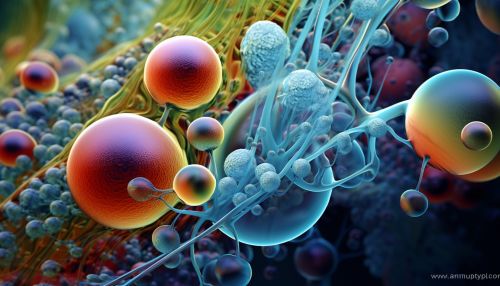Aerobe
Definition and Overview
An aerobe is an organism that uses oxygen for respiration and can survive and grow in an oxygenated environment. These organisms are found in nearly all animal species, many plant species, and many unicellular organisms. Aerobes can be further classified into obligate aerobes, which require oxygen for survival, and facultative aerobes, which can grow without oxygen but use oxygen if it is present.
Classification
Aerobes can be classified into two main types: obligate aerobes and facultative aerobes.
Obligate Aerobes
Obligate aerobes require oxygen to grow. In these organisms, oxygen serves as the terminal electron acceptor in the electron transport chain of their cellular respiration process. Without oxygen, these organisms cannot produce sufficient energy to carry out vital cellular processes and therefore cannot survive. Examples of obligate aerobes include many species of bacteria such as Mycobacterium tuberculosis and Pseudomonas aeruginosa, and fungi such as Aspergillus.
Facultative Aerobes
Facultative aerobes can grow with or without oxygen. When oxygen is present, these organisms utilize it for aerobic respiration. However, in the absence of oxygen, they can switch to anaerobic respiration or fermentation. Examples of facultative aerobes include many species of bacteria such as Escherichia coli and Staphylococcus aureus, and yeast such as Saccharomyces cerevisiae.
Metabolic Processes
Aerobes carry out the process of cellular respiration, which involves the breakdown of organic molecules to produce energy in the form of ATP (adenosine triphosphate). This process can be divided into four stages: glycolysis, the link reaction, the Krebs cycle, and the electron transport chain.


Glycolysis
Glycolysis is the first stage of cellular respiration and occurs in the cytoplasm of the cell. It involves the breakdown of glucose into two molecules of pyruvate, producing a net gain of two ATP molecules and two NADH molecules.
Link Reaction
The link reaction occurs in the mitochondria and involves the conversion of pyruvate into acetyl CoA, which is then used in the Krebs cycle. This process also produces one molecule of NADH and one molecule of carbon dioxide per pyruvate molecule.
Krebs Cycle
The Krebs cycle, also known as the citric acid cycle, involves the oxidation of acetyl CoA into carbon dioxide. This process produces two molecules of carbon dioxide, one ATP molecule, three NADH molecules, and one FADH2 molecule per acetyl CoA molecule.
Electron Transport Chain
The electron transport chain is the final stage of cellular respiration and occurs in the inner mitochondrial membrane. It involves the transfer of electrons from NADH and FADH2 to oxygen, which serves as the terminal electron acceptor. This process produces water and a large amount of ATP.
Role in the Environment
Aerobes play a crucial role in the biogeochemical cycles of the environment, particularly in the carbon and nitrogen cycles. Through the process of cellular respiration, they help in the conversion of organic carbon into carbon dioxide, which is then released into the atmosphere. In the nitrogen cycle, certain aerobic bacteria carry out the process of nitrification, which involves the conversion of ammonia into nitrite and nitrate, forms of nitrogen that can be utilized by plants.
